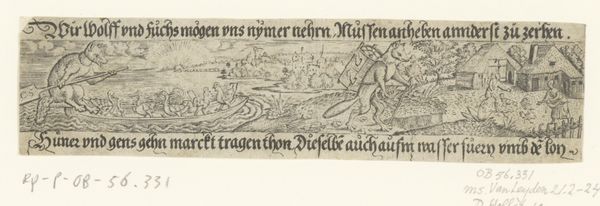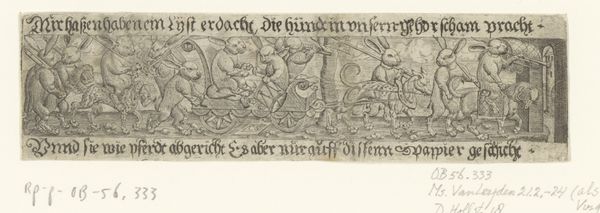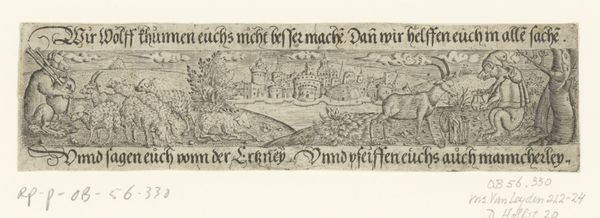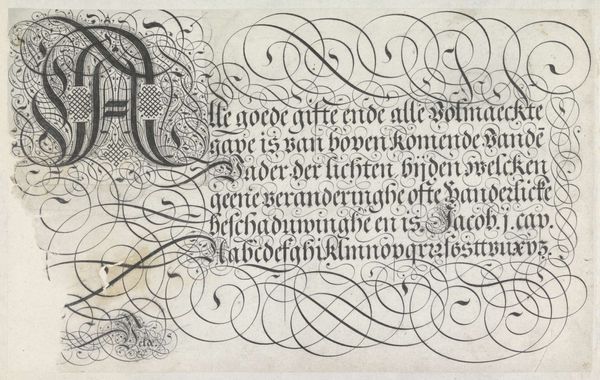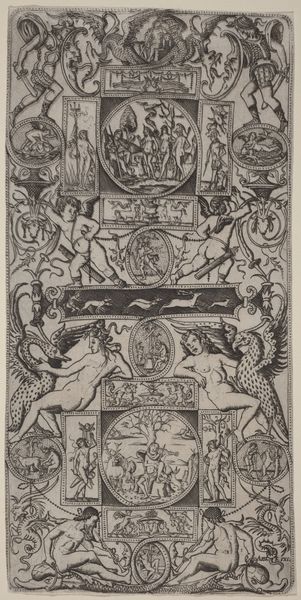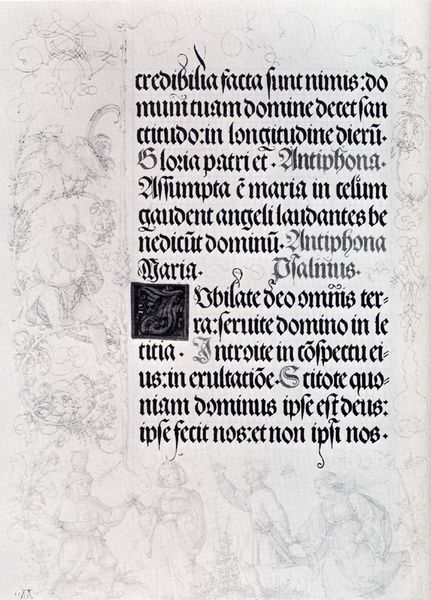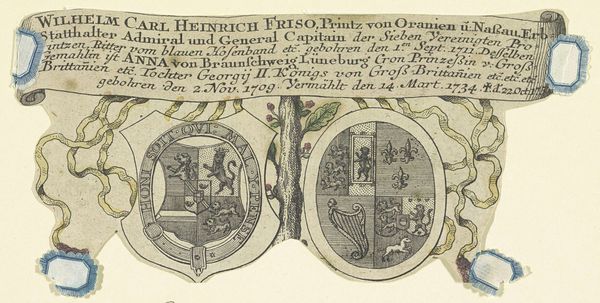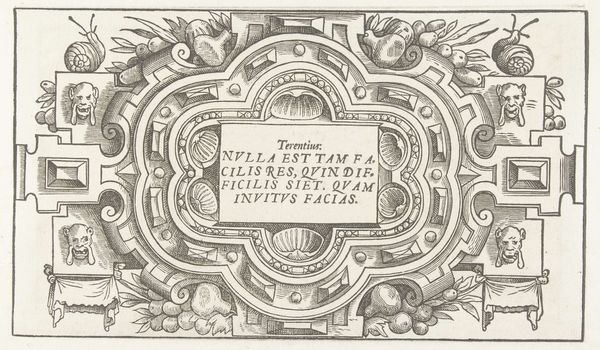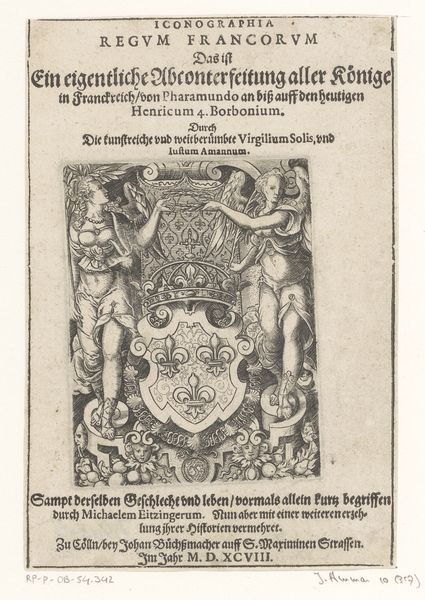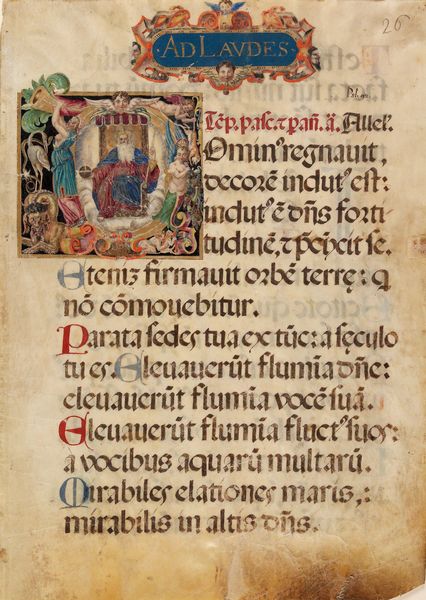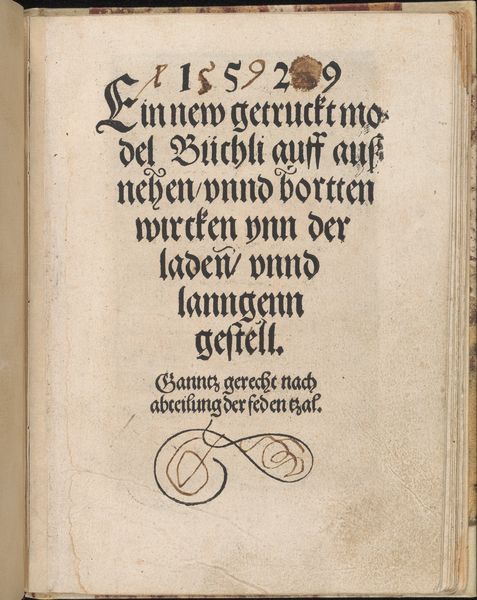
Links wolf die achter gans aan zit, rechts wolf die de passie preekt voor pluimvee c. 1563 - 1583
0:00
0:00
print, woodcut
#
comic strip sketch
#
narrative-art
#
mechanical pen drawing
# print
#
pen illustration
#
pen sketch
#
old engraving style
#
figuration
#
ink line art
#
linework heavy
#
pen-ink sketch
#
woodcut
#
pen work
#
sketchbook drawing
#
genre-painting
#
northern-renaissance
Dimensions: height 43 mm, width 174 mm
Copyright: Rijks Museum: Open Domain
Curator: At the Rijksmuseum we have a fascinating, rather sardonic piece titled "Links wolf die achter gans aan zit, rechts wolf die de passie preekt voor pluimvee," an engraving dating from around 1563-1583. It's attributed to Conrad Saldörffer. The Northern Renaissance style immediately grabs the eye. What's your initial take on it? Editor: Visually, it strikes me as an intriguing use of line. The heavy linework gives the whole image a slightly unsettling feel, wouldn't you say? Even though it seems playful at first glance. Curator: Absolutely, but let's delve a bit deeper. Saldörffer positions us within a stark commentary on power dynamics. Look at the wolf on the left, chasing the goose—a direct representation of predator and prey. This simple yet forceful image tells us of the oppression of the powerless. The very structure of the print compels us to examine uncomfortable truths about exploitation in society. Editor: I can see that reading, certainly, but I'm also drawn to how the engraving's composition creates such depth, almost a staged theatrical space with its different groups. The detail within those dark lines defines the forms, but also contributes a strange energy across the surface of the print. Curator: And look at the performative aspect embodied by the wolf on the right. The act of preaching implies a manipulation of power structures under the guise of righteousness. This brings attention to institutions throughout society that claim to act justly, even while supporting oppressive conditions. What do you think the placement and the balance achieved means here? Editor: From a formal perspective, the placement generates a sense of imbalance, highlighting the disjunction between the wolf's words and actions. There’s a semiotic tension in the contrasting forms—a reading wolf juxtaposed with one acting out primal instincts. That opposition sparks meaning. Curator: It's through this artistic tension, I would argue, that Saldörffer offers a critical reflection on our relationship with both our internal and external environments, echoing across gendered, racial and political identities. He implores the audience to become critically aware, so that it doesn’t fall victim to such manipulations of power. Editor: Yes, I can definitely agree with that, looking at how all the various compositional elements seem to coalesce into that unified idea. Curator: This brief discussion offers just a small peek into this intriguing artwork’s potential social meaning. It has been wonderful to explore this work with you. Editor: Thank you, I’ve learned so much from seeing the piece from this contextual, rather than purely formal, vantage point.
Comments
No comments
Be the first to comment and join the conversation on the ultimate creative platform.
